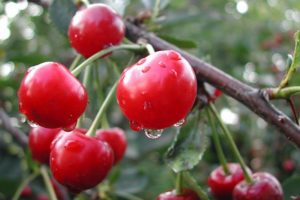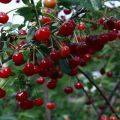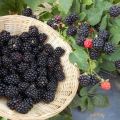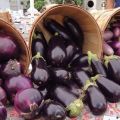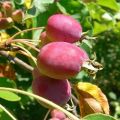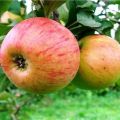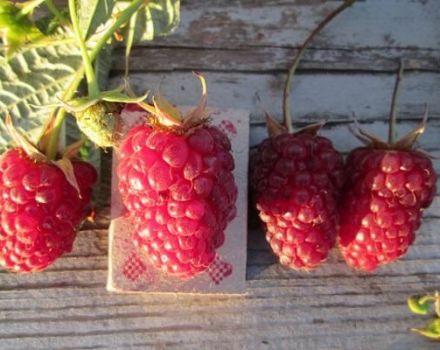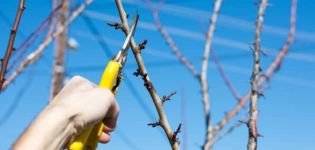Description of the scarlet cherry variety, yield characteristics and cultivation features
The variety is valued for its high quality fruits that ripen quickly. You can enjoy cherries in early July. It has an average productivity. One plant produces a maximum of seven kilograms of fruit. Bred for cultivation in the Central region. It tolerates frost well. Before you purchase scarlet cherry seedlings, you need to study the description of the variety.
Description
The Bagryanaya cherry variety is very popular in the Russian regions.
Description of the variety:
- the average ripening period allows you to harvest in the first decade of July;
- endures severe frosts;
- develops remarkably in hot regions;
- refers to early-growing, the taste of the first harvest can be appreciated from the 4th year
A good result is obtained only with a group planting. Top pollinators:
- Shubinka;
- Flask pink;
- Griot of Moscow.
Other varieties can be used. The main thing is that the flowering period coincides.
Characteristics of the tree and fruit
Wood:
- grows to a maximum of 1.8 meters in height;
- fruits have a shiny, dark red peel, very dense in structure, but imperceptible when consumed;
- the crown is elongated, compact and dense;
- leaves are painted in a rich green color, large in size, have a glossy surface;
- the pulp is medium in density, red, juicy, endowed with a refreshing sourness;
- bears fruit on annual growth and bouquet branches;
- fruit weight is about 4.5 grams;
- the shape of the cherries is round and uniform;
- the bone does not separate from the pulp, it is small in size.

Productivity and use
The harvest is versatile in use. Suitable for processing and fresh consumption. Frozen fruits do not lose their sweetness and aroma.
Under the condition of group planting, the yield is 7 kilograms per plant. In a favorable year, the figure may be higher.
The berries are well transported. Can be stored in the refrigerator for 1.5 weeks.
Advantages and disadvantages of the variety
Positive traits:
- early maturity;
- has a stable yield without frequency;
- withstands frost and tolerates heat well;
- possesses high marketability and taste;
- has a compact size;
- excellent transportability and long-term storage of crops.
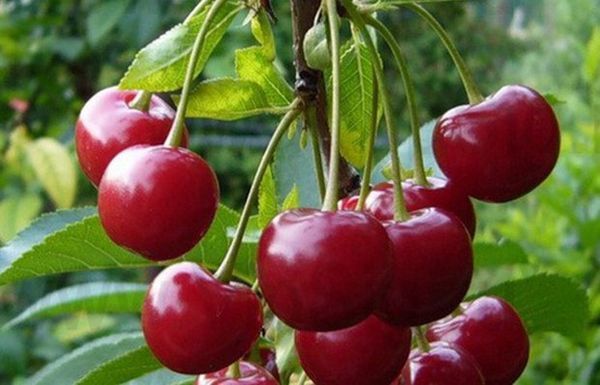
The disadvantages include self-infertility and average resistance to fungal diseases.
Growing features
The variety is looked after in the same way as for other crop varieties:
- the plant grows better in a sunny area;
- prefers light, drained, non-acidic soil;
- planted in early autumn or spring;
- water intensively for the first two years, then as needed;
- they are fed only before planting, the next time fertilizers are applied only after the beginning of fruiting;
- only young plants are sheltered for the winter period; after the beginning of the fruiting stage, the culture acquires a stable immunity to low temperatures.
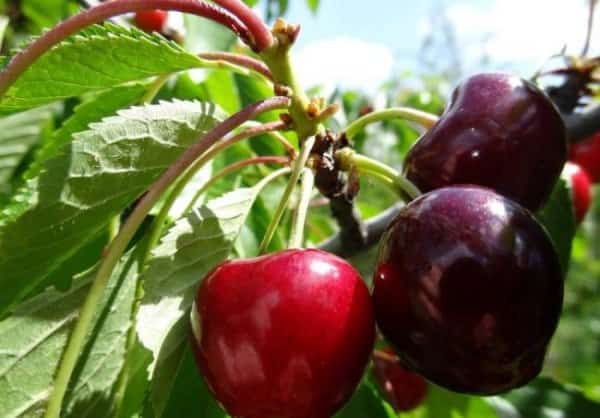
Pruning
The crown of a culture is formed independently. You just need to correct it. After the snow melts, broken off, dry and diseased branches are cut off. In the fall, cut off excess shoots. If there is no special need, then it is better not to touch them.The place of the cut must be covered with clay or special putties. Untreated areas are easily infected, which can lead to the death of the tree.
Disease prevention
Every season it is necessary to carry out preventive measures to save the tree from infection:
- Fallen leaves are collected before winter. Pathogenic bacteria easily multiply in it, and pests also lay larvae.
- The soil is dug around the plant in late autumn and spring.
Be sure to carry out processing:
- At the time of blooming, Bordeaux liquid comes up. It will take 3%.
- At the time of pouring the fruit, use the drug "Skor".
- After complete harvest, use Bordeaux liquid. You will need a 1% solution.
All drugs are diluted following the instructions.
Every year, many new varieties and hybrids appear that displace old crops. Despite its mediocre characteristics, the Scarlet cherry has proven itself well over the years. Therefore, the time did not affect the demand, and this variety is still in demand in nurseries.
